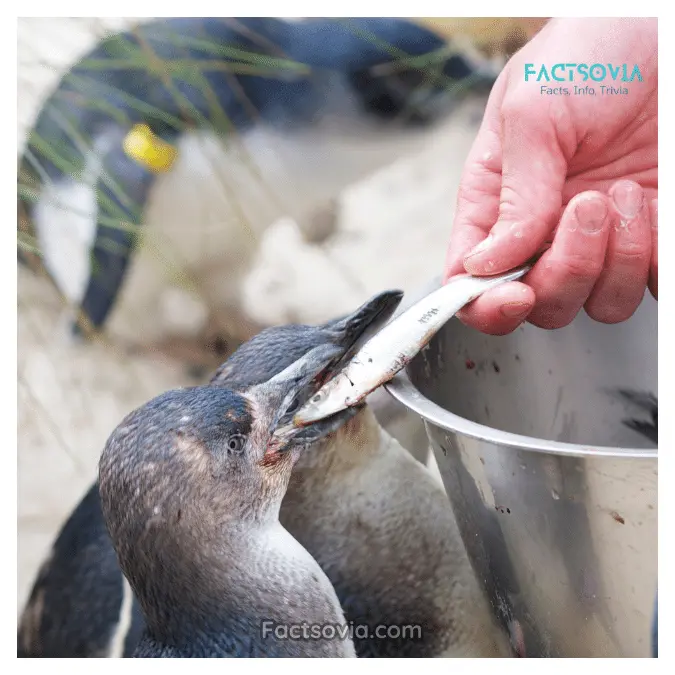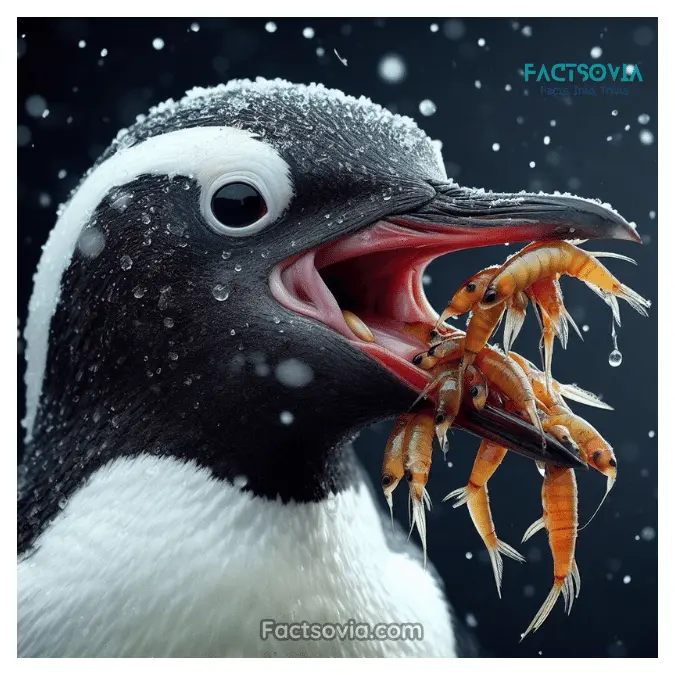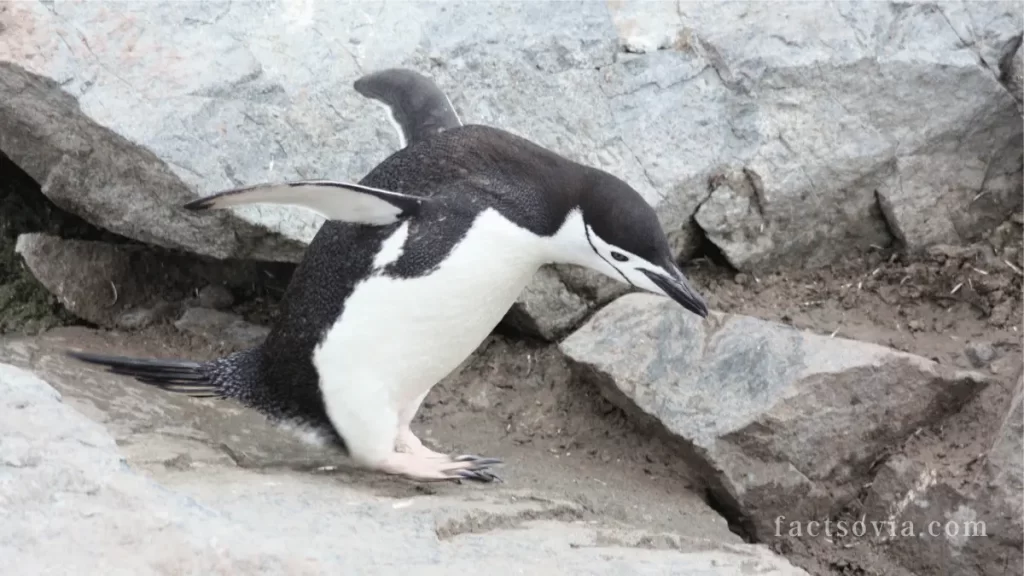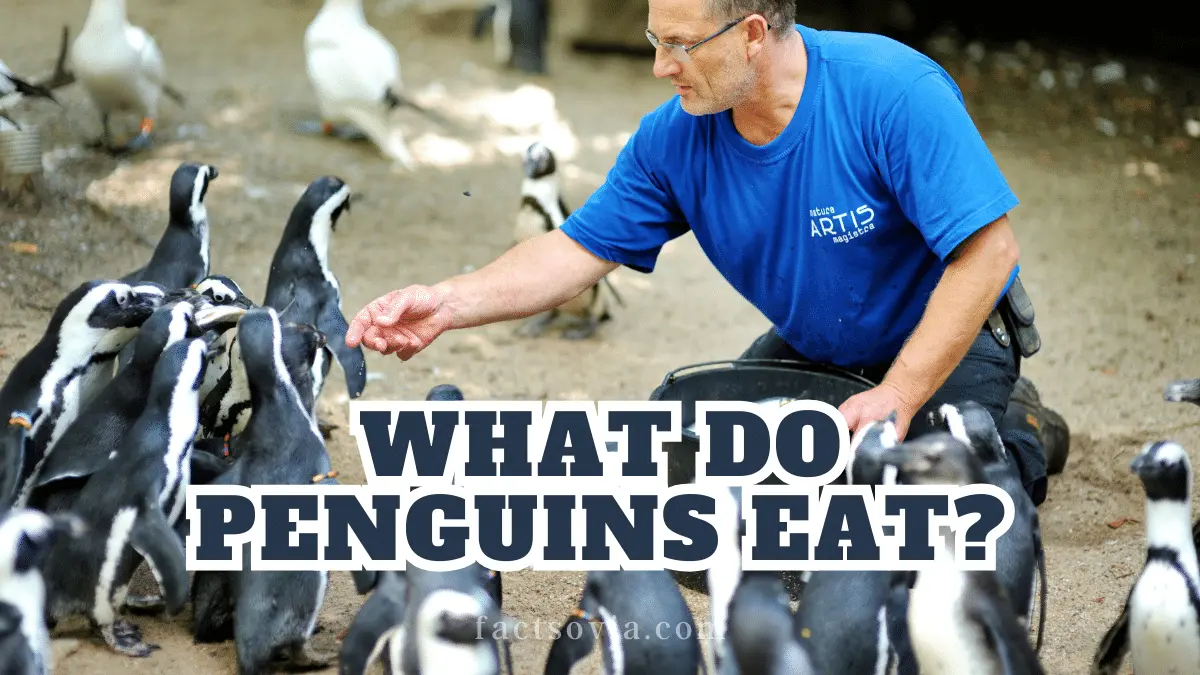We use affiliate links to run our site. When you buy through links on our site, we may earn an affiliate commission, without any added cost to you. Learn more
Penguins, those iconic inhabitants of the Southern Hemisphere, are not only known for their adorable waddle and sleek appearance but also for their intriguing dietary preferences.
In this comprehensive blog post, we will dive into the culinary world of penguins, exploring their typical diets, the variations among different species, their hunting and foraging techniques, interesting feeding habits, and the challenges they face.
By the end of this journey, you’ll have a deep understanding of what keeps these incredible birds nourished in their diverse ecosystems.
The Typical Diet of Penguins

Penguins are unequivocally carnivores. Their diet is primarily composed of fish, with a side dish of other seafood like crustaceans and krill. While the specifics may vary depending on their location and species, a common thread across all 18 species of penguins is their preference for seafood.
- Fish: Fish make up the staple of a penguin’s diet. These avian carnivores have a voracious appetite for fish of all shapes and sizes, though smaller fish such as sardines, anchovies, sprats, mullets, and cods tend to dominate their menu.
- Cephalopods: Larger penguin species enjoy feasting on cephalopods such as squid and cuttlefish, adding variety to their diet.
- Crustaceans: Smaller penguin species have a soft spot for crustaceans, including krill, crab, and shrimp, although it doesn’t constitute the bulk of their diet.
Variations in Penguin Diets
Just as humans have diverse culinary preferences, penguins too exhibit variations in their diets based on their location and species.

Emperor Penguins: The Deep Sea Divers
Emperor Penguins, the largest of all penguin species, are renowned for their extraordinary diving capabilities. They can plunge as deep as 1800 feet in search of prey, often staying submerged for up to 20 minutes. Their diet primarily consists of fish, but they can also include other seafood when available.
African Penguins: Coastal Gourmets
A unique species of African Penguins, found along the southern coast of Africa, has a distinctive diet. They savor 25 species of fish, including sardines and anchovies, and are not shy about indulging in squid and krill.
These penguins have adapted to their rocky coastline habitat and are well-equipped to dispel excess heat due to their lack of feathers around their eyes and legs.
Generalists vs. Specialists
Some penguins are generalists, meaning they eat a wide range of prey, while others are specialists, focusing on specific types of food depending on their habitat. This adaptability helps them survive in various environments, from icy Antarctic waters to temperate coastlines.
How Penguins Hunt and Forage

Penguins employ two primary methods for securing their meals: hunting while swimming and foraging through cracks in the ice. Their hunting techniques are as fascinating as their dining preferences.
Swimming Predators
Semi-aquatic carnivores, penguins often hunt for their food while swimming. They are agile and swift in the water, using their flippers to propel themselves through the depths in search of fish. Their torpedo-like shape and streamlined bodies make them efficient aquatic hunters.
Ice Foragers
In regions where ice dominates the landscape, penguins show their resourcefulness. They utilize cracks and openings in the ice to access their prey. Through these natural holes, they can dive beneath the ice and emerge with a catch. This strategy is often employed by penguins living in colder, polar regions.
Feeding Habits Of A Penguin
Penguins possess some remarkable feeding habits that set them apart from other birds. Here are a few intriguing aspects of their dining rituals:

- Taste Buds: Penguins have taste buds that have evolved to detect salty and sour flavors. This specialization helps them identify their preferred seafood, but it also means they may not appreciate other taste profiles.
- Swallowing Whole: Penguins are known to swallow their food whole. Unlike some animals that chew their food, penguins prefer to gulp it down without much mastication. This strategy allows them to consume food quickly and efficiently, vital for survival in the wild.
- Fasting During Breeding: During the breeding season, male penguins, depending on the species, can endure fasting periods that last up to 120 days. This incredible feat showcases their resilience and dedication to reproduction.
Does Penguin Have Feathers or Fur?
Challenges Faced by Penguins
Penguins, like many other species, face various threats when it comes to their food sources. Here are some of the primary challenges:
- Predators: On land, penguins contend with predators such as foxes, snakes, wild cats, dogs, and birds of prey. These predators often target penguin eggs and young chicks, posing a significant threat to the survival of these birds.
- Marine Predators: In the sea, adult penguins encounter formidable marine predators like sharks, seals, killer whales, and sea lions. These predators can make a meal out of adult penguins, particularly when they are hunting for fish.
- Human Impact: Unfortunately, the most substantial threat to penguins is us, humans. Penguins suffer from habitat loss due to climate change and food source depletion caused by overfishing and pollution. These human-induced challenges have severe consequences for penguin populations.
Can you legally buy and own a penguin as a pet?
Conclusion
In conclusion, penguins are fascinating creatures with intriguing dietary habits. They are carnivorous birds, primarily consuming fish with a side of other seafood. Their culinary preferences and hunting techniques vary among different species and locations, showcasing their adaptability in diverse environments. From deep-sea diving to coastal foraging, penguins employ unique strategies to secure their meals.
Despite their impressive feeding abilities, penguins face numerous challenges, from land-based predators to formidable marine foes. Human activities, including habitat destruction and overfishing, exacerbate the threats to these remarkable birds.
Understanding what penguins eat and how they obtain their food is not only a fascinating glimpse into their world but also a reminder of our responsibility to protect their fragile ecosystems. As wildlife enthusiasts, let’s ensure that these captivating creatures continue to thrive in their natural habitats.
FAQs
How do penguins hunt for their food?
Penguins hunt for their food by diving into the ocean and using their streamlined bodies to swim after fish and other prey.
Do penguins only eat fish?
While fish make up the majority of a penguin’s diet, they also consume other foods such as squid, krill, and even small crustaceans like shrimp.
How important is krill in a penguin’s diet?
Krill is a vital food source for penguins, especially during the breeding season. It provides the necessary nutrients for penguins to raise their chicks and helps sustain their population.
Stay tuned for more exciting insights into the animal kingdom and discover the wonders of the natural world.
Amazon and the Amazon logo are trademarks of Amazon.com, Inc, or its affiliates.
